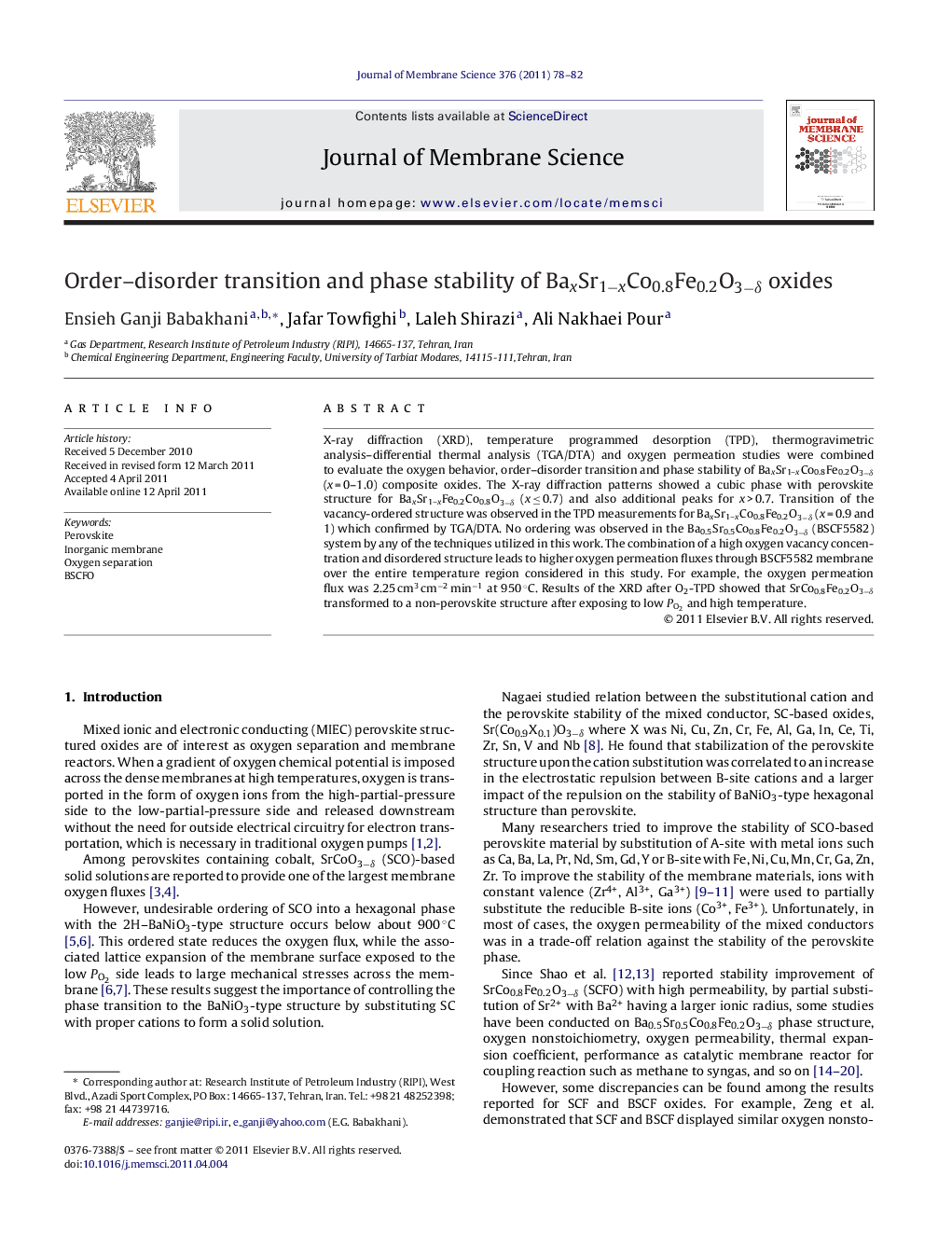| Article ID | Journal | Published Year | Pages | File Type |
|---|---|---|---|---|
| 635713 | Journal of Membrane Science | 2011 | 5 Pages |
X-ray diffraction (XRD), temperature programmed desorption (TPD), thermogravimetric analysis–differential thermal analysis (TGA/DTA) and oxygen permeation studies were combined to evaluate the oxygen behavior, order–disorder transition and phase stability of BaxSr1–xCo0.8Fe0.2O3−δ (x = 0–1.0) composite oxides. The X-ray diffraction patterns showed a cubic phase with perovskite structure for BaxSr1–xFe0.2Co0.8O3−δ (x ≤ 0.7) and also additional peaks for x > 0.7. Transition of the vacancy-ordered structure was observed in the TPD measurements for BaxSr1–xCo0.8Fe0.2O3−δ (x = 0.9 and 1) which confirmed by TGA/DTA. No ordering was observed in the Ba0.5Sr0.5Co0.8Fe0.2O3−δ (BSCF5582) system by any of the techniques utilized in this work. The combination of a high oxygen vacancy concentration and disordered structure leads to higher oxygen permeation fluxes through BSCF5582 membrane over the entire temperature region considered in this study. For example, the oxygen permeation flux was 2.25 cm3 cm−2 min−1 at 950 °C. Results of the XRD after O2-TPD showed that SrCo0.8Fe0.2O3−δ transformed to a non-perovskite structure after exposing to low PO2PO2 and high temperature.
► We investigated systematically the influence of barium ions doping in the A-site of SrCo0.8Fe0.2O3−δ oxide on the oxygen behavior, phase transition and stability. ► TPD, TPR, TGA-DTA, and XRD analysis and oxygen permeation measurement were combined for our investigation. ► The introduction of barium stabilized the perovskite structure of the material after permeation process. ► No phase transition was driven at high temperature for Ba0.5Sr0.5Co0.8Fe0.2O3−δ which presented high oxygen permeation flux.
